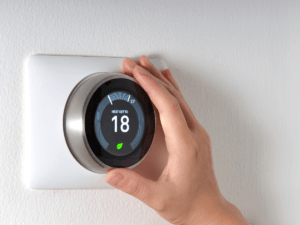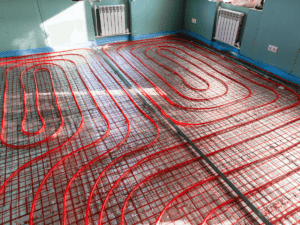If you own or operate a commercial building, it’s important to understand how do commercial HVAC systems work to ensure the comfort and safety of your occupants.
A commercial HVAC system is designed to regulate temperature, humidity, and air quality within a commercial building.
These systems can be complex, consisting of various components and controls that work together to provide a comfortable indoor environment.
In this article, we will provide an overview of how a commercial HVAC system works, including the different types of systems, the components involved.
What is a Commercial HVAC System?
A commercial HVAC system will help you to control the temperature, humidity, and air quality all over your building to ensure you have a comfortable temperature and environment.
The commercial HVAC system ensures that the people in commercial buildings such as hospitals, schools, hotels, and office buildings feel comfortable throughout the year, regardless of the weather conditions.
The HVAC system achieves this by controlling the temperature and humidity levels all over your building as well as maintaining a consistent flow of clean air.
How do Commercial HVAC Systems Work?
Heating, ventilation, and cooling are essential components of commercial HVAC systems; they work together to regulate the indoor temperature, humidity, and air quality in your commercial building.
They typically use radiators or supply air systems for heating purposes, and the heat pumps are responsible for extracting heat from either water or air.
Mechanical fan systems regulate internal air and control humidity levels in your building’s space.
For cooling systems, commercial HVAC systems use rooftop or ground units to condition or cool the air and circulate it throughout your building, while the chillers circulate cool water through pipes to provide air to the cooling coils.
There are two types of heaters usually in commercial HVAC systems, Radiant heaters that use infrared radiation and Furnaces that work by burning the fuel to heat the air.
Different Types of Commercial HVAC Systems
Commercial buildings in the United States commonly use HVAC systems to regulate indoor temperature, humidity, and air quality.
There are three main categories of HVAC systems: centralized, packaged, and individual.
Centralized HVAC systems provide the HVAC needs of the building from a single location or zone, using water as the cooling medium and significant ductwork for air distribution.
Packaged HVAC systems integrate the air conditioner, heat pump, evaporator, and fan coil into one unit, making them suitable for commercial buildings with limited space.
Individual HVAC systems use multiple individual units located in different parts of the building to provide heating, cooling, and ventilation and are easy to control but not ideal for larger commercial buildings.
Contractors who understand how commercial HVAC systems work are crucial in addressing the unique heating, cooling, and ventilation challenges that commercial buildings present.
Optional items such as purifiers, air quality improvers, and ventilators can be included in packaged HVAC systems, while examples of individual HVAC systems include rooftop units, room or office air conditioning units, and air-to-air heaters.
While centralized HVAC systems offer higher load management possibilities, they are harder to operate and maintain compared to packaged and individual HVAC systems.
Conclusion
In conclusion, understanding how a commercial HVAC system works is crucial for ensuring the comfort and safety of occupants in a commercial building.
By learning about the different types of systems, the components involved, and the importance of regular maintenance, building owners and operators can ensure that their HVAC system operates efficiently and effectively.
A well-designed and properly maintained HVAC system can not only provide a comfortable indoor environment but can also improve indoor air quality and reduce energy costs.
If you own or operate a commercial building, make sure to consult with a licensed HVAC professional to ensure proper maintenance and functionality of your system.







